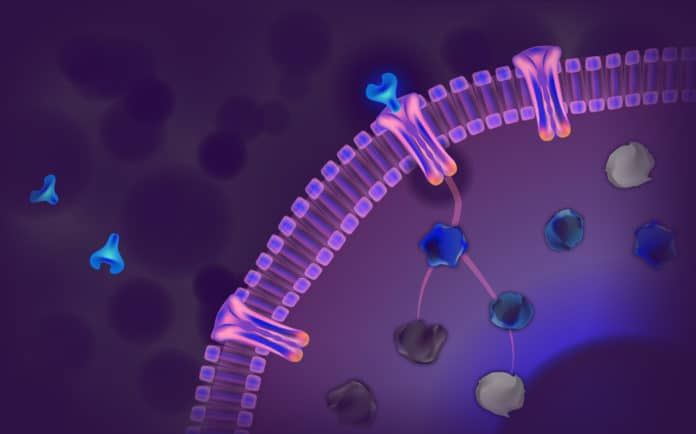HIV, the virus that causes AIDS, is one of the world’s most serious public health challenges and it still continues to be a major global public health issue. In 2017, almost 36.9 million people worldwide living with HIV/AIDS.
This continually growing disease alluding scientists to create a vaccine for the virus. But, it is difficult to create a vaccine for HIV is difficult because the virus constantly mutates. Vaccines work by teaching the immune system where on a virus an antibody can attach before neutralizing it. To create a vaccine, researchers first have to identify this spot.
To develop broadly neutralizing antibodies, scientists primarily need to find something that remains constant on the virus for those antibodies to latch onto.
Now, a team of scientists at the Penn State has created proteins using computational modeling that can sneak through HIV’s protective coating. The proteins mimicked different surface features of HIV.
Cheng Zhu, a postdoctoral fellow at Penn State College of Medicine said, “We were able to show that by using our designed proteins, the blood was able to spontaneously generate antibodies that can inhibit the infection of HIV in cellular models. When we incubated the HIV virus, its infectivity was dramatically reduced by the rabbits’ blood.”
“The proteins — or immunogens — we developed aren’t a finished product, but we were able to show evidence that it’s possible to do. Moreover, it’s also very exciting that we were able to create a new method to tailor make proteins, which could open the door for developing vaccines for other infections, as well.”
Nikolay Dokholyan, G. Thomas Passananti Professor and Vice Chair for Research in the Department of Pharmacology at Penn State said, “HIV uses a coating of carbohydrates to protect a protein on its surface called Env. While this protein could be a potential target for vaccines, the carbohydrate coating makes it difficult or impossible for antibodies to access and neutralize it.”
“But sometimes, holes naturally appear in this coating, exposing the Env protein to potential antibodies. We wanted to find a way to target these holes.”
He added, “The newly developed proteins mimic the conserved protein surface of different strains of HIV to be used in the vaccine. While usually proteins are engineered by changing one amino acid at a time, they wanted to try a different approach.”
“Instead of changing one amino acid at a time, it’s a large surface of the HIV strain that is cut and then plugged into a different protein. It’s an important milestone to be able to do these major molecular surgeries, and it’s very exciting that the strategy worked with very high accuracy.”
During the study, scientists conducted a customized trial on rabbits and drew blood samples once a month. After analyzing the samples, the researchers found that the blood contained antibodies that were able to bind to HIV.
While the work seems promising, but scientists think that further study is still required.
Dokholyan said, “It’s important that we were able to generate an immune response to HIV and show that it’s possible as a proof of concept. But, we still need to improve the antibodies’ neutralization abilities and other aspects before it can become a viable vaccine.”
“In the future, the protein design method could potentially help create and personalize vaccines for different diseases in various areas in the world.”
The study is published today in Nature Communications.
Elena Dukhovlinova, Olivia Council, Lihua Ping, Edgar M. Faison, Shamit S. Prabhu, E. Lake Potter, Stephen L. Upton, Guowei Yin, James M. Fay, Laura P. Kincer, Ean Spielvogel, Sharon L. Campbell, S. Rahima Benhabbour, Hengming Ke and Ronald Swanstrom, all from University of North Carolina at Chapel Hill, also participated in this work.
